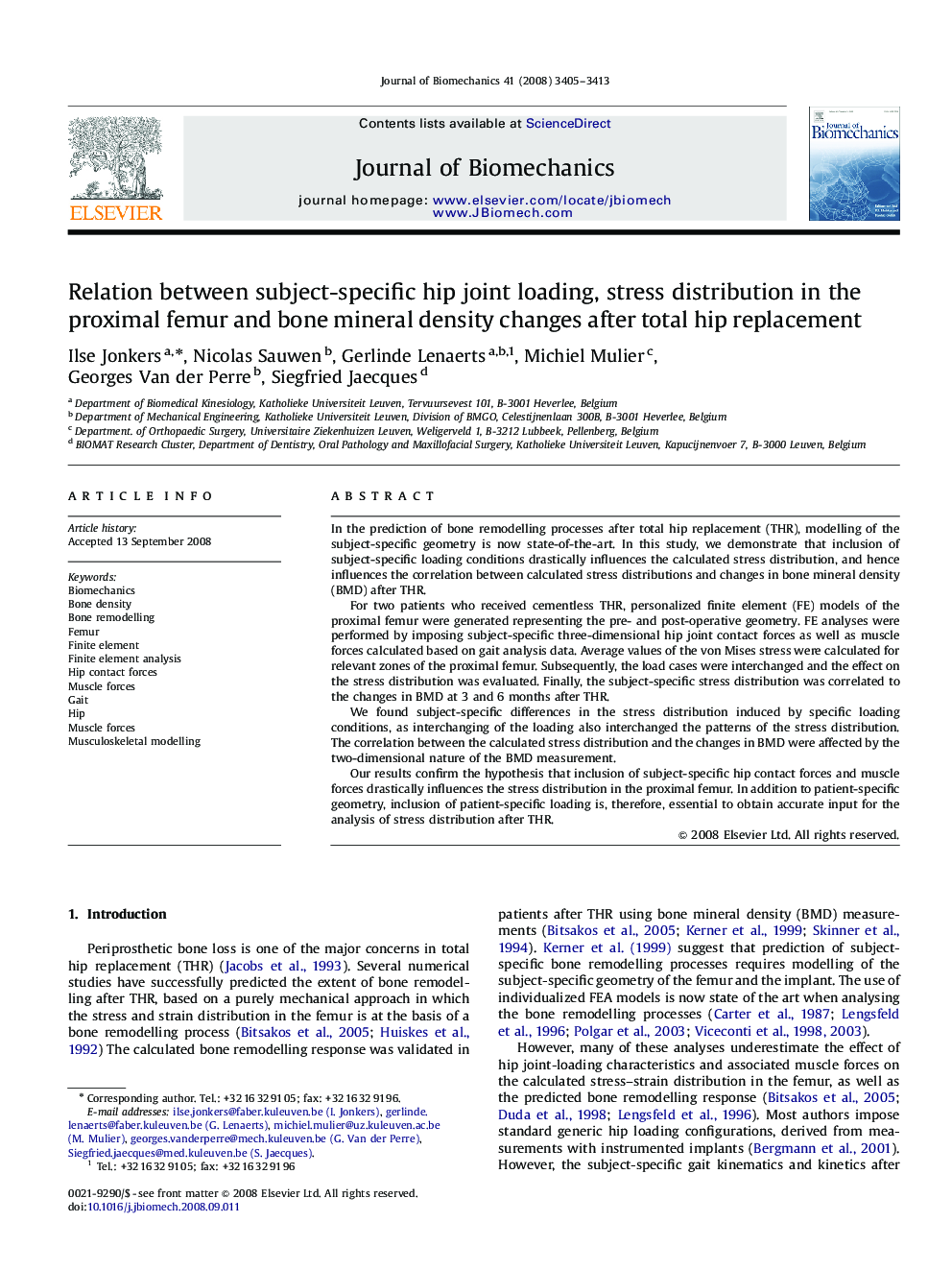| کد مقاله | کد نشریه | سال انتشار | مقاله انگلیسی | نسخه تمام متن |
|---|---|---|---|---|
| 874720 | 910347 | 2008 | 9 صفحه PDF | دانلود رایگان |

In the prediction of bone remodelling processes after total hip replacement (THR), modelling of the subject-specific geometry is now state-of-the-art. In this study, we demonstrate that inclusion of subject-specific loading conditions drastically influences the calculated stress distribution, and hence influences the correlation between calculated stress distributions and changes in bone mineral density (BMD) after THR.For two patients who received cementless THR, personalized finite element (FE) models of the proximal femur were generated representing the pre- and post-operative geometry. FE analyses were performed by imposing subject-specific three-dimensional hip joint contact forces as well as muscle forces calculated based on gait analysis data. Average values of the von Mises stress were calculated for relevant zones of the proximal femur. Subsequently, the load cases were interchanged and the effect on the stress distribution was evaluated. Finally, the subject-specific stress distribution was correlated to the changes in BMD at 3 and 6 months after THR.We found subject-specific differences in the stress distribution induced by specific loading conditions, as interchanging of the loading also interchanged the patterns of the stress distribution. The correlation between the calculated stress distribution and the changes in BMD were affected by the two-dimensional nature of the BMD measurement.Our results confirm the hypothesis that inclusion of subject-specific hip contact forces and muscle forces drastically influences the stress distribution in the proximal femur. In addition to patient-specific geometry, inclusion of patient-specific loading is, therefore, essential to obtain accurate input for the analysis of stress distribution after THR.
Journal: Journal of Biomechanics - Volume 41, Issue 16, 5 December 2008, Pages 3405–3413